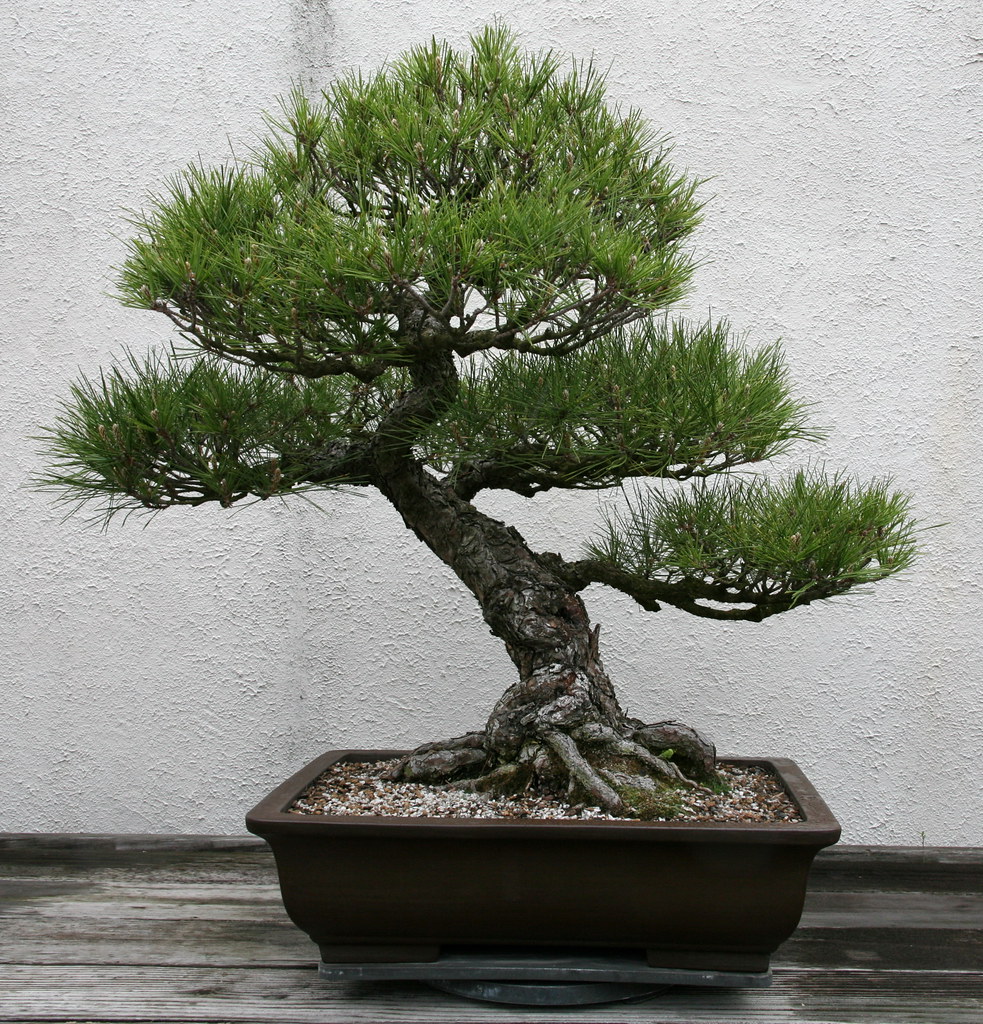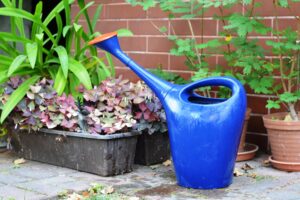
In early September the new buds that have formed at the tips of the candles should be reduced to two buds. I try to pick two buds that are equal in size and are lateral-facing buds and retain those. The other buds are removed by pinching/cutting them out. Doing this will ensure that you will only have two candles produced from next year’s spring growth rather than a multitude of candles, which would cause swelling at that location rather than a nice branch taper. This annual process is what produces year-to-year ramification and taper of a black pine. The two buds produce two candles next year, each of which will produce buds next year that will be reduced to two buds thereby producing a total of four candles the following year. Those four will produce eight the following year, etc.
Black pines shed their needles that are three to four years old. You will see that if you have older needles they are, or are beginning to, turn yellow/brown and are shedding. These needles can be removed by simply pulling them off the tree with fingers or tweezers. I make sure to clean these needles and not leave any sitting on top of the soil of the tree as this could lead to disease issues.
By mid-November, the needles of black pine will have hardened off. This is the time that I thin out the needles for winter. Depending on the strength of the tree and the particular branch (weak or strong) I reduce the needles for each candle. On the upper, more apically dominant, and stronger candles, I will reduce the needles to as few as six to eight pairs of needles. In the middle of the tree, I may reduce the candles to eight to ten pairs of needles and the lower branches to ten to twelve pairs of needles per candle. This is not a hard and fast rule as you may find weaker candles in the upper portion of the tree and stronger candles in the lower part of the tree. Adjust the number of needles you leave on these according to the particular strength of that candle. This can be done by pulling the needles out by hand or with tweezers, or by cutting them at the base of the needles. I find cutting them to be easier and there is less chance of pulling out a developing bud. The stub of the needles left from cutting will turn brown and will fall off or can be sluffed off by hand after they brown. This procedure allows light and airflow into the interior of the tree and promotes back budding for next spring. It will also keep the tree from producing thickened candles that can disrupt ramification/taper of branches in development/refinement.
Article by:
Jim Keith



